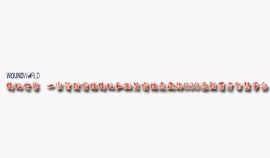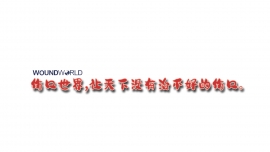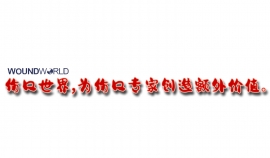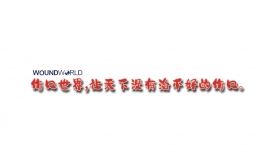文献精选
Yoichi Nakagawa1 , Hiroo Uchida1* , Akinari Hinoki2 , Chiyoe Shirota1 , Wataru Sumida1 , Satoshi Makita1 , Hizuru Amano1 , Masamune Okamoto1 , Aitaro Takimoto1 , Seiya Ogata1 , Shunya Takada1 , Daiki Kato1 and Yousuke Gohda1
Abstract
Background: Omphalocele is a congenital abdominal wall defect of the umbilical cord insertion site. A giant omphalocele, with a fascial defect>5 cm in diameter and/or containing>50% of the liver within the hernia sac, can be challenging for pediatric surgeons. Recently, negative pressure wound therapy has been reported as an effective management for giant omphaloceles; however, it is not recommended for an infected wound with necrotic tissue as it may exacerbate infection. We adopted negative pressure wound therapy with irrigation and dwell time (NPWTi-d) for a case of a ruptured giant omphalocele. Artificial membranes, followed by artificial dermis, were used to promote fibrous capsule formation, and then NPWTi-d was used to promote granulation while controlling infection. However, studies have not been conducted regarding NPWTi-d for ruptured giant omphaloceles; hence, we present our treatment experience with NPWTi-d for a giant omphalocele.
Case presentation: The patient was a boy born at 38 weeks and 3 days of gestation, weighing 1896 g. He was diagnosed with a ruptured giant omphalocele with a total liver and intestine defect hole of 10 cm × 10 cm. The patient underwent silo placement using an artificial mesh, followed by plicating the artificial mesh at 4 days of age. The herniated viscera were gradually reduced into the abdominal cavity; however, the defect size was still large. Hence, a collagen-based artificial dermis was patched on the defect hole. After creating a fresh and smooth granulated tissue, NPWTi-d was applied at 33 days of age to promote granulation and control infection. We used the 3 M™ V.A.C.® Ulta Therapy Unit with 3 M™ VeraFlo™ therapy. NPWTi-d was stopped at 60 days of age when the granulation tissue was well formed including at the artificial dermis site. The wound was managed with prostandin ointment and appropriate debridement, resulting in complete epithelialization at 5 months of age.
*Correspondence: 该Email地址已收到反垃圾邮件插件保护。要显示它您需要在浏览器中启用JavaScript。
1 Department of Pediatric Surgery, Nagoya University Graduate School of Medicine, 65 Tsurumai-cho, Showa-ku, 466-8550 Nagoya, Aichi, Japan Full list of author information is available at the end of the article
© The Author(s) 2022. Open Access This article is licensed under a Creative Commons Attribution 4.0 International License, which permits use, sharing, adaptation, distribution and reproduction in any medium or format, as long as you give appropriate credit to the original author(s) and the source, provide a link to the Creative Commons licence, and indicate if changes were made. The images or other third party material in this article are included in the article’s Creative Commons licence, unless indicated otherwise in a credit line to the material. If material is not included in the article’s Creative Commons licence and your intended use is not permitted by statutory regulation or exceeds the permitted use, you will need to obtain permission directly from the copyright holder. To view a copy of this licence, visit http://creativecommons.org/licenses/by/4.0/. The Creative Commons Public Domain Dedication waiver (http://creativeco mmons.org/publicdomain/zero/1.0/) applies to the data made available in this article, unless otherwise stated in a credit line to the data.
Conclusions: Artificial membranes followed by artificial dermis were used to promote a fibrous capsule and artificial dermis granulation, which protects against organ damage. NPWTi-d achieved better control of infection and promoted wound healing. NPWTi-d combined with artificial dermis can effectively treat ruptured giant omphaloceles.
Keywords: Negative pressure wound therapy, Negative pressure wound therapy with irrigation and dwell time, Omphalocele
Jeremy Meyer1,2,3 • Elin Roos4 • Richard Justin Davies3 • Nicolas Christian Buchs1,2 • Fre´de´ric Ris1,2 • Christian Toso1,2
Accepted: 25 December 2022© The Author(s) 2023
Abstract
Background Prophylactic negative-pressure wound therapy (pNPWT) may prevent surgical site infection (SSI) after laparotomy, but existing meta-analyses pooling only high-quality evidence have failed to confirm this effect. Recently, several randomized controlled trials (RCTs) have been published. We performed an updated systematic review and meta-analysis to determine if pNPWT reduces the incidence of SSI after laparotomy. Methods MEDLINE, Embase, CENTRAL and Web of Science were searched on the 25.08.2021 for RCTs reporting on the incidence of SSI in patients who underwent laparotomy with and without pNPWT. The systematic review was compliant with the AMSTAR2 recommendation and registered into PROSPERO. Risk ratios (RR) for SSI in patients with pNPWT, and risk difference (RD) between control and pNPWT patients, were obtained using random effects models. Heterogeneity was quantified using the I 2 value, and investigated using subgroup analyses, funnel plots and bubble plots. Risk of bias of included RCTs was assessed using the RoB2 tool. Results Eleven RCTs were included, representing 973 patients who received pNPWT and 970 patients who received standard wound dressing. Pooled RR and RD between patients with and without pNPWT were of, respectively, 0.665 (95% CI 0.49–0.91, I 2 : 38.7%, p = 0.0098) and -0.07 (95% CI -0.12 to -0.03, I 2 : 53.6%, p = 0.0018), therefore demonstrating that pNPWT decreases the incidence of SSI after laparotomy. Investigation of source of heterogeneity identified a potential small-study effect. Conclusion The protective effect of pNPWT against SSI after laparotomy is confirmed by high-quality pooled evidence.
Jeremy Meyer
该Email地址已收到反垃圾邮件插件保护。要显示它您需要在浏览器中启用JavaScript。
1 Division of Digestive Surgery, University Hospitals of Geneva, Rue Gabrielle-Perret-Gentil 4, 1211 Geneva 14, Switzerland
2 Unit of Surgical Research, Medical School, University of Geneva, Geneva, Switzerland
3 Cambridge Colorectal Unit, Addenbrooke’s Hospital, Cambridge University Hospitals NHS Foundation Trust, Cambridge, UK
4 Department of Global Public Health, Karolinska Institutet, Solna, Sweden
Abbreviations
NNT Number needed to treat
OR Odds ratio
pNPWT Prophylactic negative-pressure wound therapy
RCT Randomized controlled trial
RD Risk difference
SSI Surgical site infection
Abdel‑Salam Abdel‑Aleem Ahmed1 · Sherif Eltregy1 · Mahmoud Ibrahim Kandil1
Received: 7 June 2022 / Accepted: 4 August 2022 / Published online: 16 August 2022
© The Author(s) 2022
Abdel-Salam Abdel-Aleem Ahmed
该Email地址已收到反垃圾邮件插件保护。要显示它您需要在浏览器中启用JavaScript。;
该Email地址已收到反垃圾邮件插件保护。要显示它您需要在浏览器中启用JavaScript。
Sherif Eltregy
该Email地址已收到反垃圾邮件插件保护。要显示它您需要在浏览器中启用JavaScript。;
该Email地址已收到反垃圾邮件插件保护。要显示它您需要在浏览器中启用JavaScript。
Mahmoud Ibrahim Kandil
该Email地址已收到反垃圾邮件插件保护。要显示它您需要在浏览器中启用JavaScript。;
该Email地址已收到反垃圾邮件插件保护。要显示它您需要在浏览器中启用JavaScript。
1 Department of Orthopaedic Surgery, Benha Faculty of Medicine, Benha University, Farid Nada Street, Kalyubia, Benha Post Office 13518, Egypt
Abstract
Purpose Orthopaedic-related wounds are critical situations calling for care to avoid deep infections and its consequences. The purpose of this study was to evaluate the efficacy of using honey for care of orthopaedic-related wounds with limited
Patients and methods This prospective study included 50 cases with an average age of 38.18 (range 17–63) years with 38 males and 12 females. The most frequent wound location was the leg (41 patients; 82%), then the foot (six patients; 12%), and the ankle in three patients (6%). The aetiologies were open fractures (34 cases; 68%), infected tibial non-unions (nine cases; 18%), and post-operative infections (seven cases; 14%). Exposed tendon was present in three cases. Bone exposure was present in two cases. Deep infection was present in 29 cases (58%). Besides treating the primary cause, a ribbon of gauze soaked with honey was applied to the wounds after thorough saline washing.
Results Wound sizes were variable. All cases showed improvement in all parameters with complete wound healing and full coverage of bone and tendons. Recurrence of deep infection occurred in three cases and treated by debridement. One case needed sequestrectomy of a small exposed tibial cortical fragment. Exposed tendon cases showed superficial necrosis which was treated by simple debridement. Initial mild itching occurred in five patients with spontaneous resolution.
Conclusion With treating the underlying aetiology and optimising the patient’s general condition, honey was an effective, simple, and afordable method of wound care in diferent orthopaedic conditions even with exposed bone or tendons.
Keywords Orthopaedic wounds · Open fractures · Infected non-union · Honey dressing · Postoperative infections · Ilizarov
Vera Spatenkova1,2,3,4*, David Sila5 , Milada Halacova6 , Jan Hradil7 , Zdenek Krejzar5,8 and Eduard Kuriscak2
Abstract
Background: Transoral spine surgery is specific due to both its surgical approach and the spectrum of diseases it targets. Patients with high age and elevated clinical frailty scores are often involved, and there are reports of increased risks of surgical site infection (SSI) due to extended exposures requiring maxilotomy or mandibulotomy. Our case series describes surgical wound complications under the meticulous application of individualized perioperative multimodal management.
Methods: Our primary outcome was the occurrence of SSI and the secondary outcome was the occurrence of other noninfectious wound complications evaluated in 22 adult patients who consecutively underwent the transoral spine surgery from 2001 to 2018 (trauma – C2, cervical nonunion: 6 patients, 27%; tumor: 4 patients, 18%; osteomyelitis: 6 patients, 27%; other non-traumatic cases: 6 patients, 27%). Structuralized data comprising parameters related to nosocomial infections after spine surgery were continuously processed and put into specialized database of preventive multimodal nosocomial infection control protocol that was used as a main source of analyzed parameters. The mean age of studied cohort was 54.9 ± 15.5 years, with 68% males, mean body mass index (BMI) 24.9 ± 5.22, and the mean clinical frailty score was 2.59 ± 1.07. There were 7 patients (32%) who only had the transoral approach and 15 patients (68%) having this approach followed by additional posterior approach. We observed SSI from all wound complications for up to one year after surgery.
Results: There were 4 (18%) superficial wound complications from transoral approach, but none of them were infected. We had 2 patients (13%) with deep wound infections after subsequent posterior approach, but only one (4.5%) was classified as SSI.
Conclusions: We describe the wound complications and the incidence of SSI in a series of 22 patients after the transoral surgery. Considering the average values of the clinical frailty score reaching 2.59, American Society of Anesthesiologists score of 2.73, and the BMI of 26.87, the transoral spine surgery did not seem to be a considerable risk for SSI in the analyzed cohort, provided preventive perioperative multimodal management is properly individualized and
Keywords: Surgical site infection, Transoral, Surgery, Frailty, Wound complications, Antibiotic prophylaxis, Skull base
*Correspondence: 该Email地址已收到反垃圾邮件插件保护。要显示它您需要在浏览器中启用JavaScript。
1 Neurocenter, Neurointensive Care Unit, Regional Hospital, Husova 357/10, 46063 Liberec, Czech Republic Full list of author information is available at the end of the article
© The Author(s) 2022. Open Access This article is licensed under a Creative Commons Attribution 4.0 International License, which permits use, sharing, adaptation, distribution and reproduction in any medium or format, as long as you give appropriate credit to the original author(s) and the source, provide a link to the Creative Commons licence, and indicate if changes were made. The images or other third party material in this article are included in the article’s Creative Commons licence, unless indicated otherwise in a credit line to the material. If material is not included in the article’s Creative Commons licence and your intended use is not permitted by statutory regulation or exceeds the permitted use, you will need to obtain permission directly from the copyright holder. To view a copy of this licence, visit http://creativecommons.org/licenses/by/4.0/. The Creative Commons Public Domain Dedication waiver (http://creativeco mmons.org/publicdomain/zero/1.0/) applies to the data made available in this article, unless otherwise stated in a credit line to the data.




